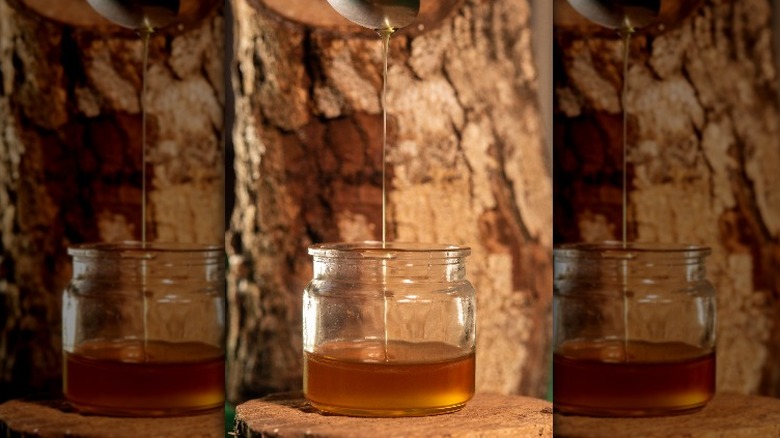What Makes Melipona Honey Unique?
The art of keeping bees and harvesting honey, the sweet fruit of their labor, is a centuries-old practice that The Nibble traces back to the ancient Egyptians, who first referenced the use of honey in 5500 B.C.E. As people began to manage wild bee hives, domesticated bees traveled to new places with settlers and colonists and began pollinating various species of plants that created different flavors within their honey; there are 300 honey varietals in the U.S. alone, and countless variations worldwide. Some varieties are revered for their incredibly unique culinary and medicinal uses.
Hailing from Africa and Southeast Asia, bees have played an integral role in human history as the makers of the original source of sugar since the first cro-magnon man cracked open a beehive. Recognized as the creators of an amazing food source and as helpful crop pollinators, the common honeybee, Apis mellifera, was domesticated and spread throughout Europe, eventually traveling with colonizers to North America.
In the forests of Mexico's Yucatan Peninsula, honey from native stingless Melipona bees served as a cherished medicine and food source to the ancient Mayans for thousands of years, and The Matador Network states that it is still a revered part of that area's current-day culture. Once threatened by the influx of European honeybees, Melipona bee populations are making a comeback and getting global attention for the rare characteristics of the honey they produce.
Melipona honey's notable qualities are tied to the Yucatán
According to Food & Wine, Yucatán is a southwestern Mexican state known for its many treasures like the Mayan ruins and dense tropical rainforests. This environmentally fragile area is home to the Maya people, who maintain the 3,000-year-old ancient art of Melipona honey production called meliponicultura.
Stingless Melipona bees (Melipona Beechelli) have the ability to absorb more of the nutritious elements from the plants they frequent. The Matador Network notes that Melipona honey producers connect the nectar of the flowers and plants found only in the Yucatán with the healthful honey. The diverse flora specific to the peninsula is full of healthy compounds that Melipona bees turn into honey that is antifungal, antiviral, and antimicrobial.
Scientific studies confirmed that honey created by stingless bees contains a higher concentration of antioxidants and inflammation-fighting compounds than honey made by bees with stingers (via Food & Wine). Bright Stuffs notes that the nutrient-dense honey revered by ancient Mayan healers and modern-day health enthusiasts might prevent cancer, control blood sugar levels, help wounds heal, and treat other conditions like eye diseases, skin conditions, respiratory issues, and problems with digestion.
Melipona bees have been endangered since the influx of European honeybees introduced by Spanish colonizers, and meliponicultura was slowly fading into history. There has been a welcome revival in the culture as the honey's healthful qualities have piqued a global interest, and its health benefits aren't the only thing creating a buzz.
The unique flavor of Melipona honey
The Melipona bee's ability to absorb more healthy nutrients and compounds from the flowers they frequent results in honey with a higher concentration of fructose over glucose, as reported by Food & Wine. This ability, along with the specific plants and flowers in the region, creates the Melipona honey that stands alone in flavor and texture compared to traditional honey.
Melipona honey is notably less viscous and less prone to crystalization than the thick, slow-moving honey you'll find at the store. It has a satiny consistency that is runny and more fluid than its traditional counterparts but maintains a rich and luxurious mouth feel. The plants and flowers of the Yucatán lend sweetened herbal and floral notes balanced with earthy hints of umami. The unexpected citrus flavor of Melipona honey has captured the attention of professional chefs who say that it tastes as if it has been infused with lime. The honey can be used in a variety of unique dishes ranging from sweet treats to savory surprises.
Foodies tempted to try Melipona honey for themselves will have to do a bit of research and prepare themselves for the price tag associated with this specialty sweetener, as production is limited. Adding Melipona honey to your pantry will hopefully aid in the revived production of this unique ingredient, and it's currently available on Etsy, Amazon, and from independent online retailers.


